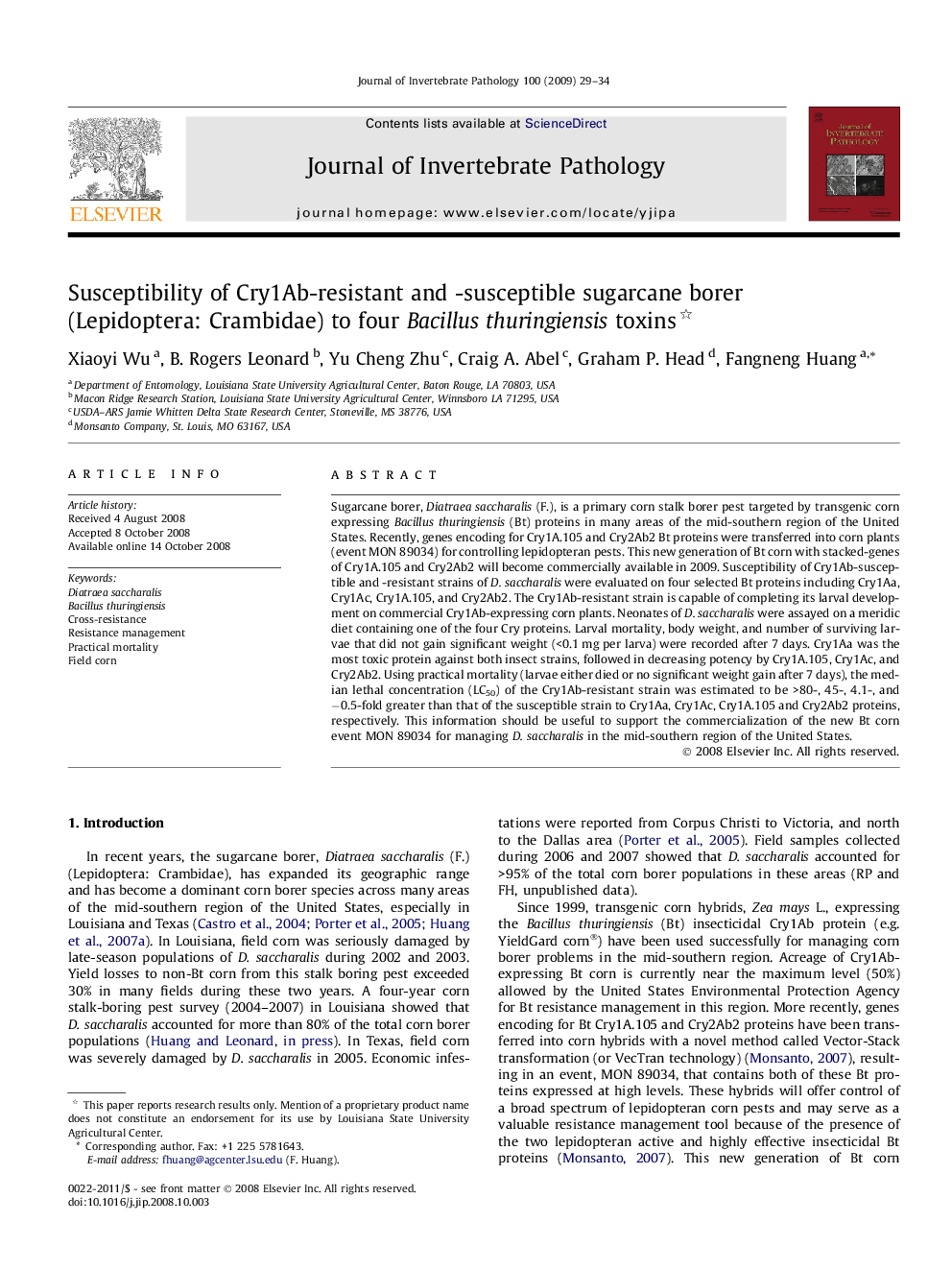| Article ID | Journal | Published Year | Pages | File Type |
|---|---|---|---|---|
| 4558475 | Journal of Invertebrate Pathology | 2009 | 6 Pages |
Sugarcane borer, Diatraea saccharalis (F.), is a primary corn stalk borer pest targeted by transgenic corn expressing Bacillus thuringiensis (Bt) proteins in many areas of the mid-southern region of the United States. Recently, genes encoding for Cry1A.105 and Cry2Ab2 Bt proteins were transferred into corn plants (event MON 89034) for controlling lepidopteran pests. This new generation of Bt corn with stacked-genes of Cry1A.105 and Cry2Ab2 will become commercially available in 2009. Susceptibility of Cry1Ab-susceptible and -resistant strains of D. saccharalis were evaluated on four selected Bt proteins including Cry1Aa, Cry1Ac, Cry1A.105, and Cry2Ab2. The Cry1Ab-resistant strain is capable of completing its larval development on commercial Cry1Ab-expressing corn plants. Neonates of D. saccharalis were assayed on a meridic diet containing one of the four Cry proteins. Larval mortality, body weight, and number of surviving larvae that did not gain significant weight (<0.1 mg per larva) were recorded after 7 days. Cry1Aa was the most toxic protein against both insect strains, followed in decreasing potency by Cry1A.105, Cry1Ac, and Cry2Ab2. Using practical mortality (larvae either died or no significant weight gain after 7 days), the median lethal concentration (LC50) of the Cry1Ab-resistant strain was estimated to be >80-, 45-, 4.1-, and −0.5-fold greater than that of the susceptible strain to Cry1Aa, Cry1Ac, Cry1A.105 and Cry2Ab2 proteins, respectively. This information should be useful to support the commercialization of the new Bt corn event MON 89034 for managing D. saccharalis in the mid-southern region of the United States.
